Have you been wondering what that engine cover is for and whether you can drive your car safely without it? You’ve come to the right place, for we have researched this question, and we have the answer for you.
The short answer is yes; you can drive your car without the top engine cover. You can safely remove it and drive your car if that is what you were planning to do.
However, why not read about the function of that cover in the succeeding sections before deciding whether you want to remove it or not. Additionally, do you know that your engine has two covers—one on top and another one below it? Read on!
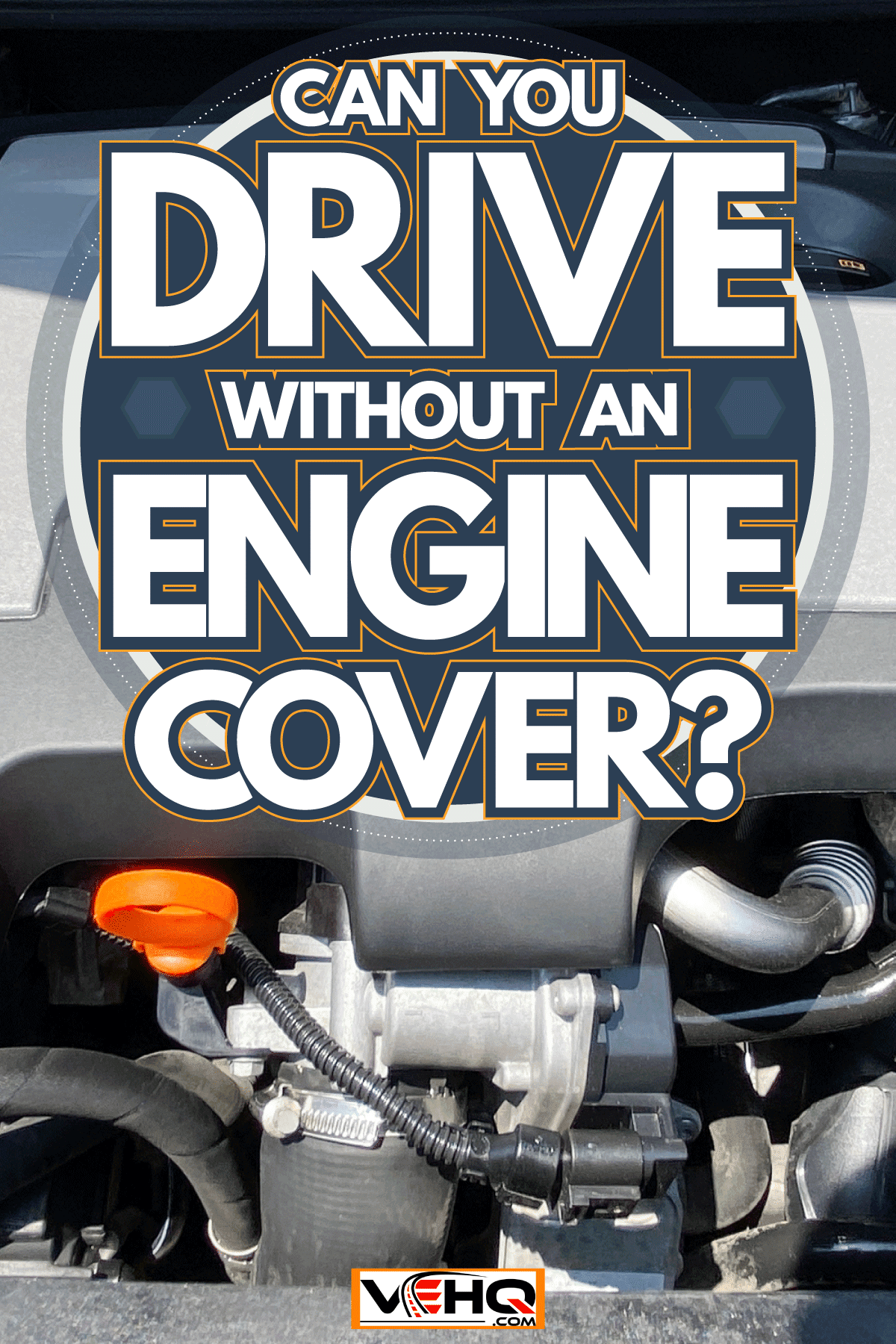
What is the purpose of engine covers?
Cars with plastic covers that were made more than a decade ago don’t have any purpose for the covers other than cosmetic. This is no longer the case for newer cars. The plastic engine cover for newer cars serves several functions that we discuss in detail below.
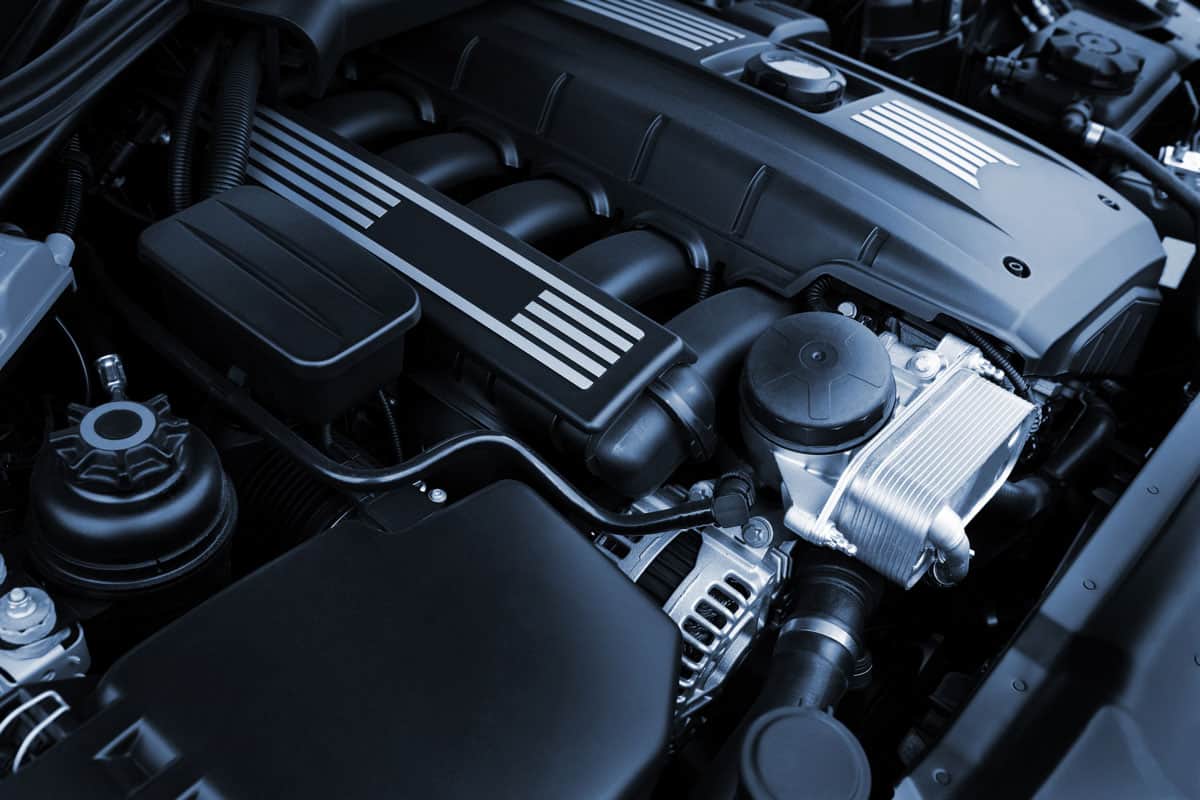
Wire Organizer
The plastic engine covers provide clips and channels to keep wires away from the engine parts that can get really hot. This is especially important in new cars.
The new features added to new cars are mostly based on electronics. More electronic features mean that you have a lot of wires running inside the engine area.
Keeping the wires isolated in their own pathways and channels prevents the wire coatings from melting or weakening when exposed to the engine. If the wire coating melts, this can cause a short circuit that can cause damage to the different components of your car.
Noise Reduction
Newer cars have smaller and more efficient engines that produce a lot of power. The downside to smaller engines is that they can produce large amounts of noise when revved.
Plastic is an excellent sound dampener. The plastic engine cover serves as a sound dampener to lessen the noise coming from a modern engine when it is revved.
Water Cover
Engines have two covers. The first one is what we see when we open the engine bay. The second cover is installed at the bottom of the engine.
Both covers protect the engine from excessive water splashes that can damage the electrical components. We discussed how newer cars have more and more electronic components that support new features. These electrical components are vulnerable to water and need to be protected.
That is where the protection of an engine cover comes in. In addition to providing protection from water, the engine cover also protects the wires from getting exposed to too much dust. If dust, sand, or small rocks managed to get into the air intake and make it to the engine, then it could cause a problem.
An engine cover also protects the wires and electrical components from oil or coolant spills that might happen.
Engine Splash Shield
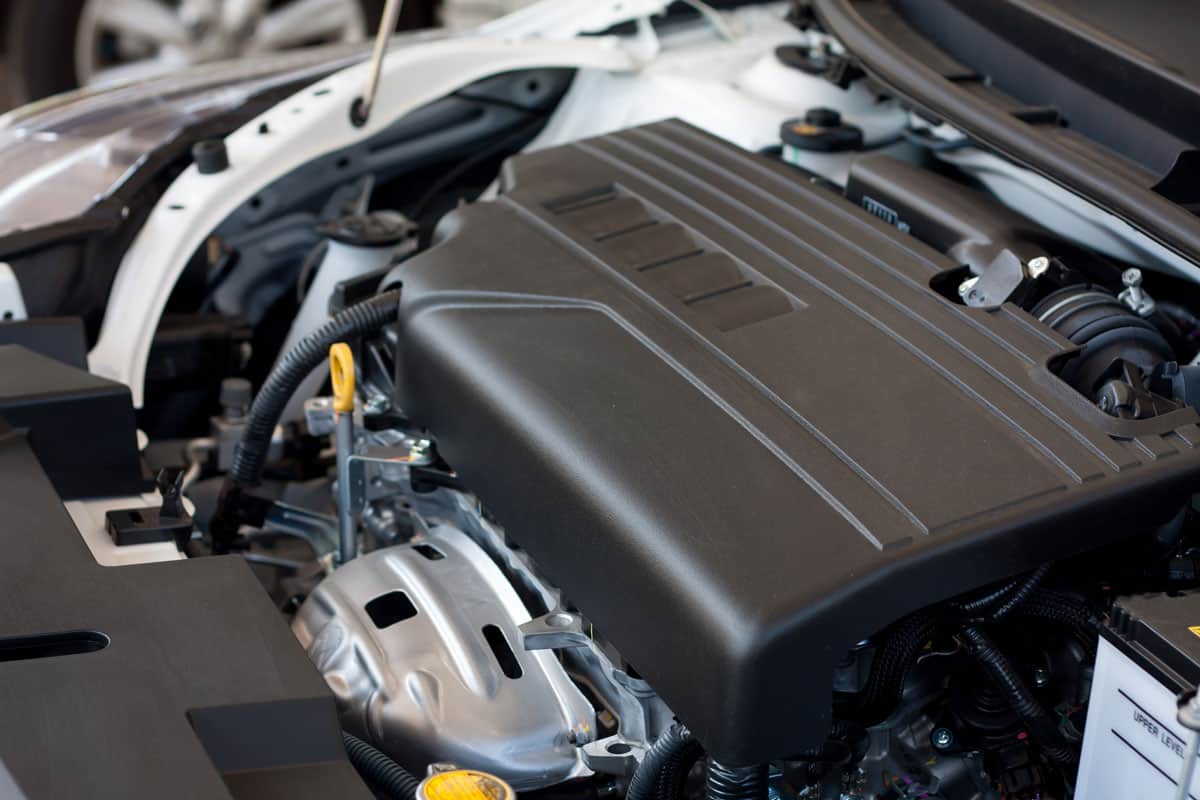
An engine splash shield is the engine cover under the engine that we mentioned briefly earlier.
In addition to protecting the engine from water—as its name suggests—it also protects the engine from small rocks, nails, or sand. It protects the engine and critical parts like the transmission, alternator, starter motor, and the oil pan.
They also serve as an aerodynamic cover that helps reduce drag from the air that gets into the engine bay from under the car. Reducing drag improves gas mileage.
If you’ve seen an engine splash shield eventually falling off because of damage, imagine that damage getting to your engine, alternator, or transmission. That’s how important the splash shield is to your car.
Cosmetics
Your engine bay will look more organized and cleaner with the top cover on. The cover is easier to clean than what’s underneath, and this makes the engine bay look cleaner.
How do you fix a broken engine splash shield?
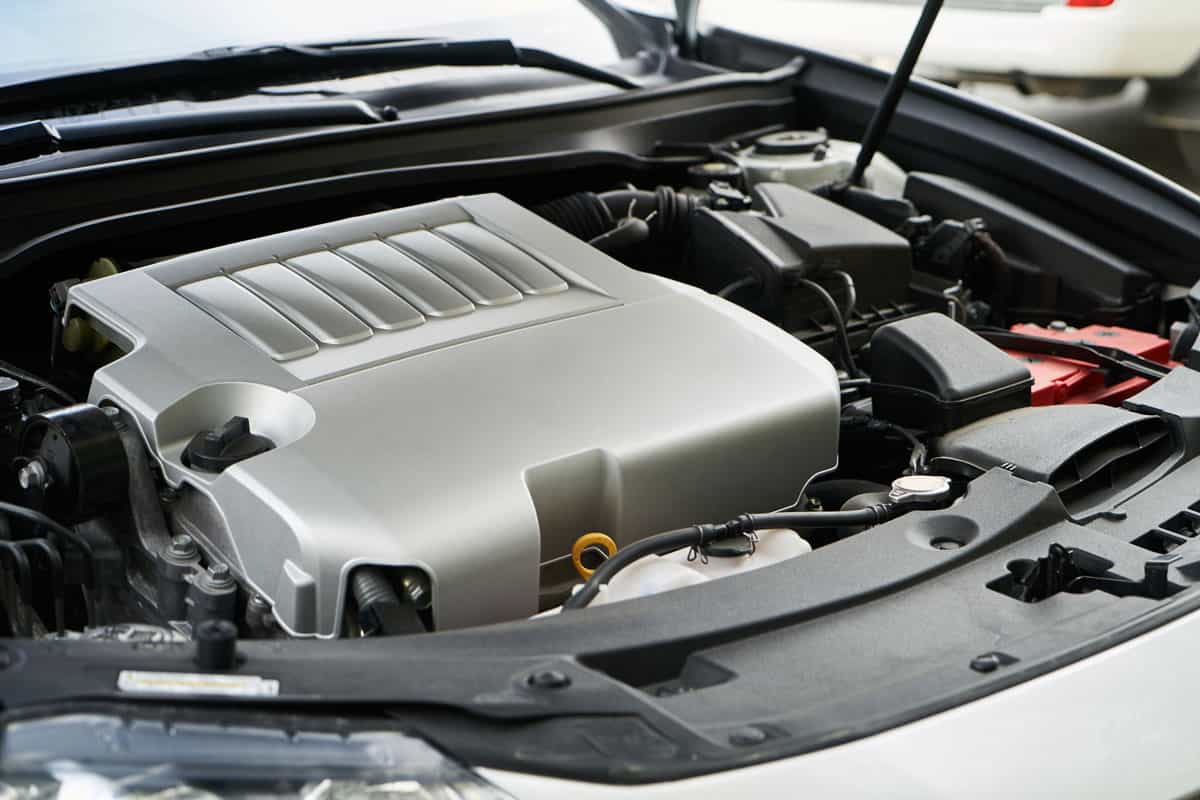
Splash shields for cars are normally made of plastic so that their weight will not be a factor in the car’s fuel efficiency. For vehicles that are used in offroad travel, a metal engine splash shield is common.
If the splash shield is not bolted properly to your car, part of it could drop and get dragged on the road. This can cause the splash shield to get torn.
You can follow the steps below to fix an engine splash shield that was torn. Keep in mind that these steps might not be suitable for damaged splash shields that have large holes in them or splash shields that have a large missing chunk.
Preparing The Splash Shield
- Raise your car so that you can have enough working space to get to your splash shield.
- Unscrew the splash shield from under your car. Set aside the screws or bolts.
- If you have a metal splash shield and the metal is no longer even, you can hammer it on an even surface first until you get it to a more even surface.
Repairing The Splash Shield
- Drill small holes half an inch away from the area of the tear. The distance of the holes depends on where the tear is located, but normally you can drill holes that are around 4 inches apart. Drill holes on both sides of the tear that line up with the hole on the opposite side.
- Insert wires or wire ties into the pair of holes and secure them.
- Do the same to the other pairs of holes until you have fastened the two sides of the tear together.
- Cut off the excess wires after you secure both sides of the tear together.
- Reinstall the engine splash shield back under your car.
A pack of 100 pieces of 8-inch HMROPE heavy-duty cable zip ties or wire ties with a 50-pound tensile strength is available on Amazon. Check it out through this link.
How long does it take to replace the engine splash shield?
If your engine splash shield can no longer be repaired with the method we provided earlier, then the only option would be to replace it. If your splash shield fell off the bottom of your car, then the only solution would be to replace it.
Replacing the engine splash shield is simple. It shouldn’t take longer than ten minutes. This is considering you already have the replacement ready to be installed. What commonly takes a long time is waiting for the replacement engine splash shield to become available.
Can you paint the plastic engine cover?
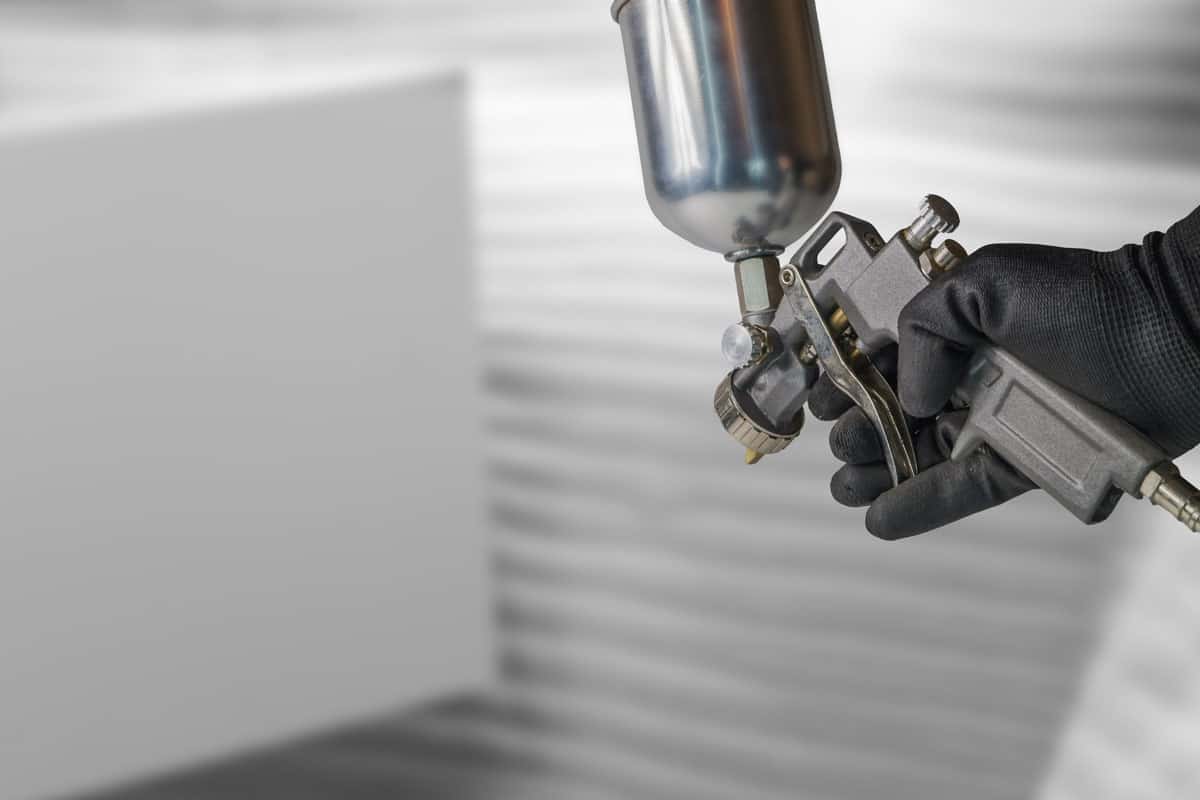
Engine covers are commonly made of ABS plastic, and most paints will not adhere to them. You can paint your plastic engine cover, but you need to know what kind of primer to use and how to do it correctly. Follow the steps below to paint your engine cover:
Preparing The Engine Cover For Painting
- Remove your engine cover. Some engine covers are kept in place with screws or bolts, while some use metal clips. Remove them carefully and set the screws or clips aside to easily reinstall them later after you finish painting the engine cover.
- Wash the engine cover thoroughly with mild dish soap, warm water, and a sponge. The warm water will make it easier to get rid of oil-based dirt.
- Use a lint-free towel to dry the engine cover.
- Place a few layers of old newspaper on a flat and stable surface.
- Place your engine cover on top of the layer of old newspaper.
- Make sure the engine cover is dry before you proceed.
Applying The Primer And Paint
- Shake the can of plastic paint primer for several minutes. This is to ensure that the paint primer is mixed well.
- Spray an even layer of plastic primer on the engine cover.
- Let it dry for at least 30 minutes.
- Repeat Steps 2 and 3 two more times to give your engine cover three coats of plastic primer.
- Shake the can of high-temperature spray paint for several minutes like what you did to the plastic primer to mix the paint well.
- Spray an even layer of high-temperature paint on the engine cover.
- Let the paint dry for at least 30 minutes.
- Repeat Steps 6 and 7 to give your engine cover a total of three coats of high-temperature paint. You can add more coats if you wish. Alternatively, you can add additional coats of different colors to highlight areas.
The Dupli-Color CP199, a clear adhesion promoter primer, is available on Amazon. Check it out through this link.
Conclusion
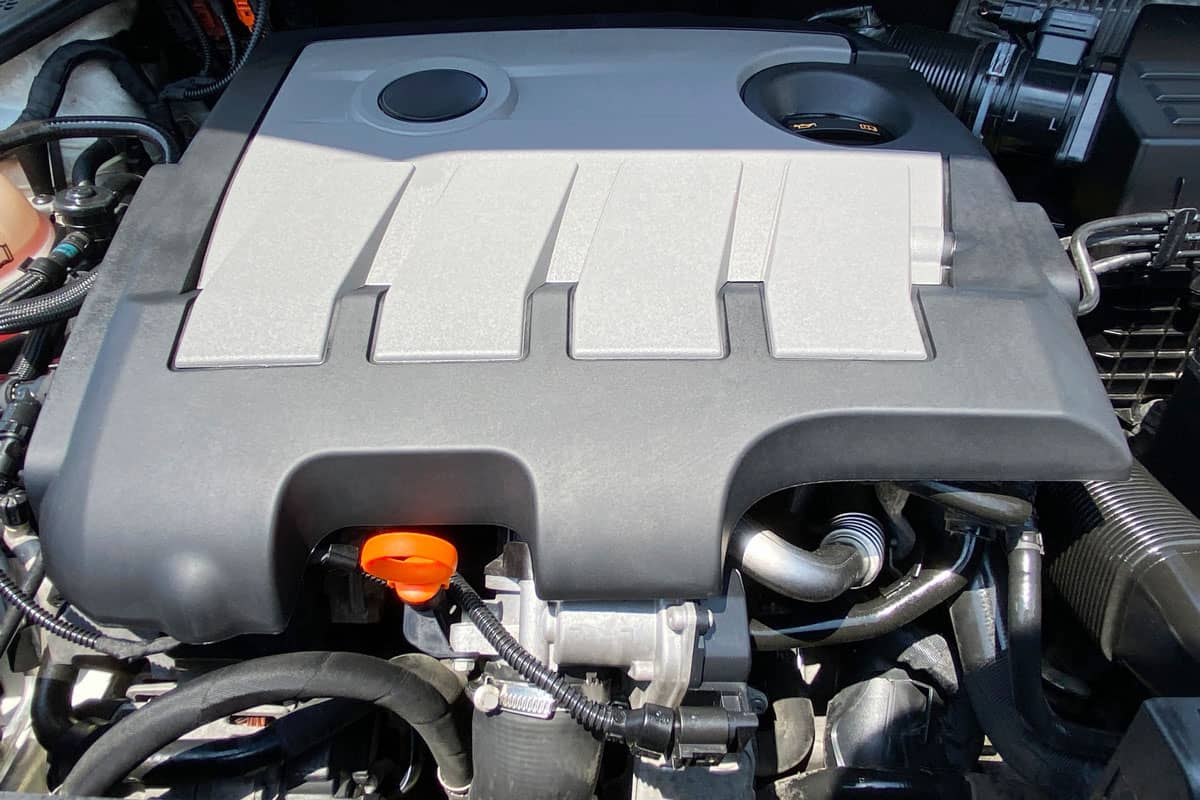
You can drive your car without the engine cover on top. However, it is not a good idea to drive your car without the engine cover underneath.
If you enjoyed reading this article, you might find the articles below equally enjoyable to read:
How To Remove Caked-On Grease And Sludge From Engine?
Why Is Coolant Reservoir Boiling But Engine Not Overheating?


